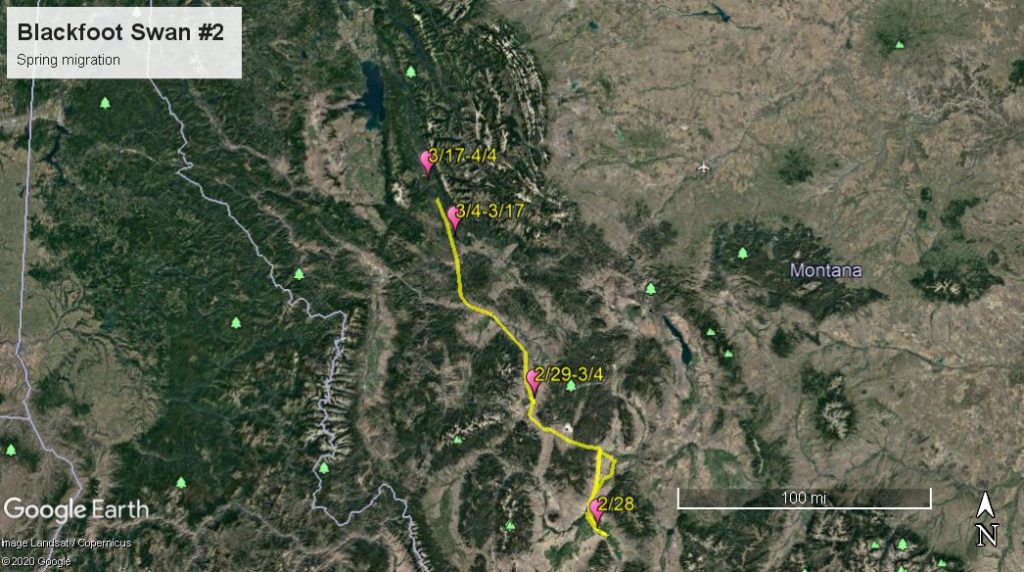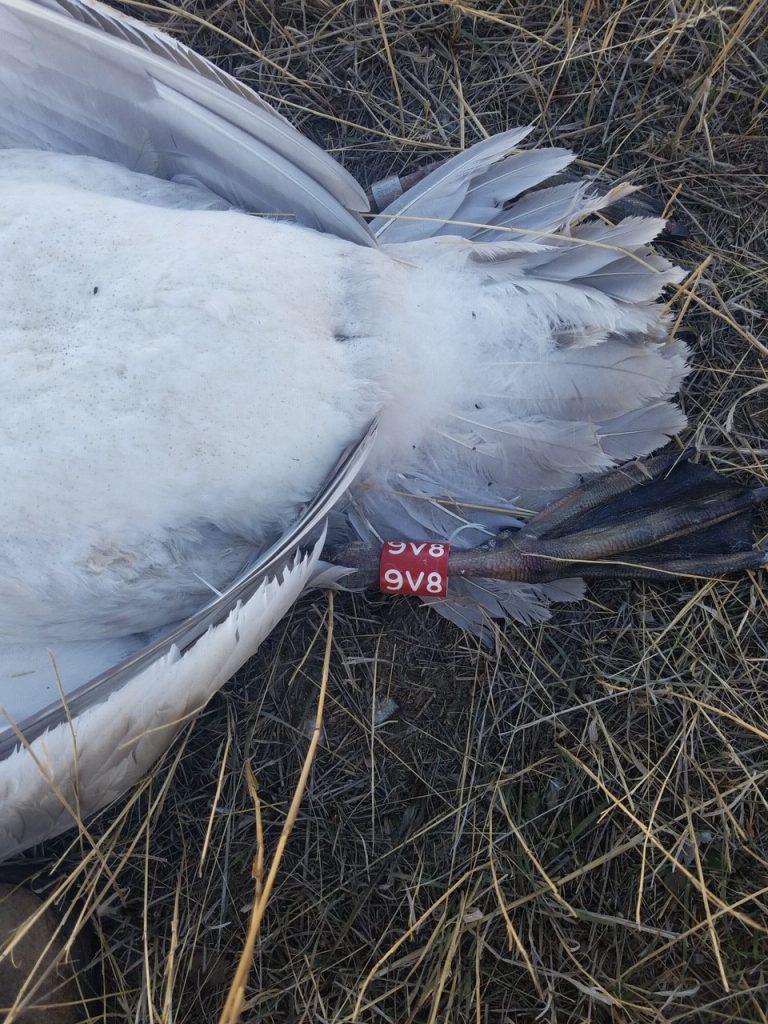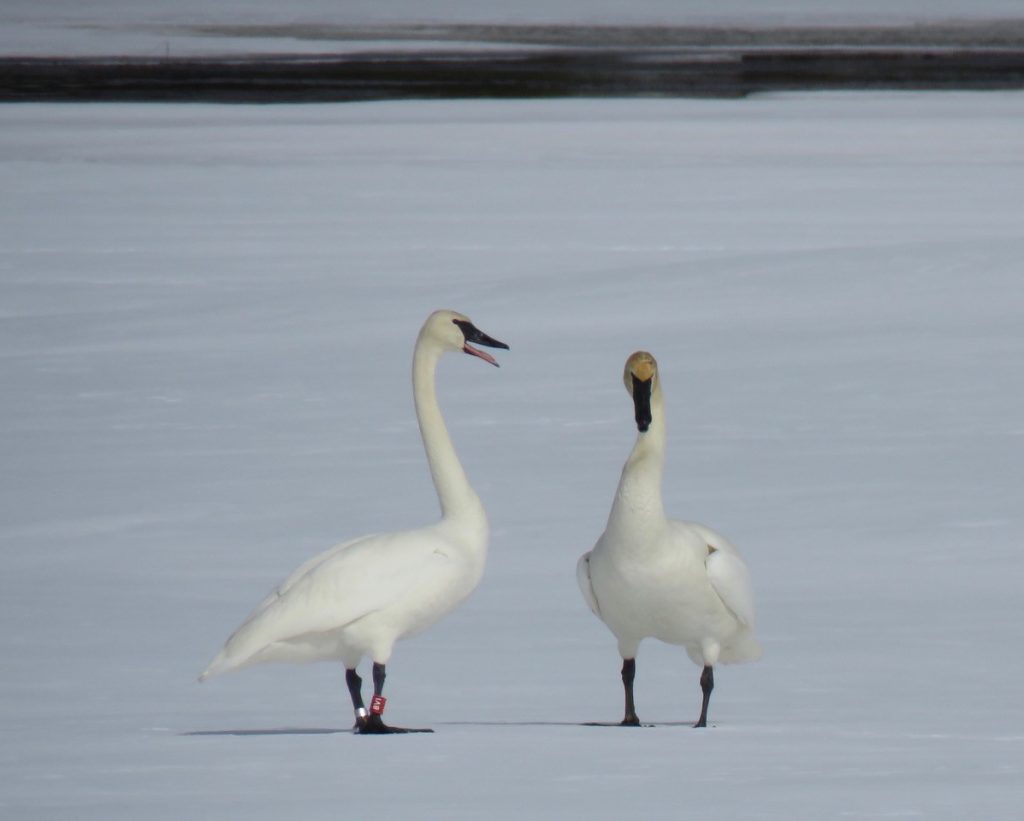By Elaine Caton
Spring (or Mud Season, as we tend to call it around here) is returning to the Blackfoot, and so are the Trumpeter Swans. The first swans were seen coming through the watershed in late February. Many Trumpeter and Tundra Swans migrate through our area on their way to nesting grounds farther north, so not every Trumpeter we see in the spring or fall is a “Blackfoot bird”. But we know that some of our local swans were here by early March, thanks in part to one of the satellite radio collars we put on two swans last summer. Both of those swans spent most of the winter in the Ruby River valley in SW Montana, as do many Blackfoot swans, near the town of Sheridan.
Swan #2 left that area on February 28 and headed north. She spent that night on a pond near Rocker, Montana, and spent the next three nights on the Warm Springs Ponds near Anaconda. On March 4 she flew north and west down the Clark Fork River, over the Garnet Range, and to the Clearwater. We have a data gap until March 17, when she flew north again to the Holland Lake area, and was last known to be there on April 4. You can see the route she took on the map below!

By now, the third week in April, we’ve been able to document that almost all of our nesting pairs are back on their territories in the Blackfoot. Some have returned with last year’s cygnets in tow, but will likely chase them away soon as they begin to prepare for another nesting season. The young ones may group up with other young swans and spend the summer on a lake or wetland that doesn’t have a nest on it.
Sadly, one of the cygnets we released last September at our public release, Swan 9V8, was found dead under a power line in the Madison valley in November.

A more positive sighting was of Swan 8V1, who was released as a cygnet in 2015 and had not been observed after that fall until last week, when she was photographed in a field just north of Rainy Lake in the Clearwater! Landowner Helene Michaels of Seeley Lake took this photo of 8V1 and another swan, likely her mate.

Here is a very cool animation of Trumpeter Swan migration in North America from the Cornell Lab of Ornithology. If you click on the link, you can watch how swans move from wintering grounds to nesting locations throughout the year on a continental scale!: https://ebird.org/science/status-and-trends/truswa/abundance-map-weekly
